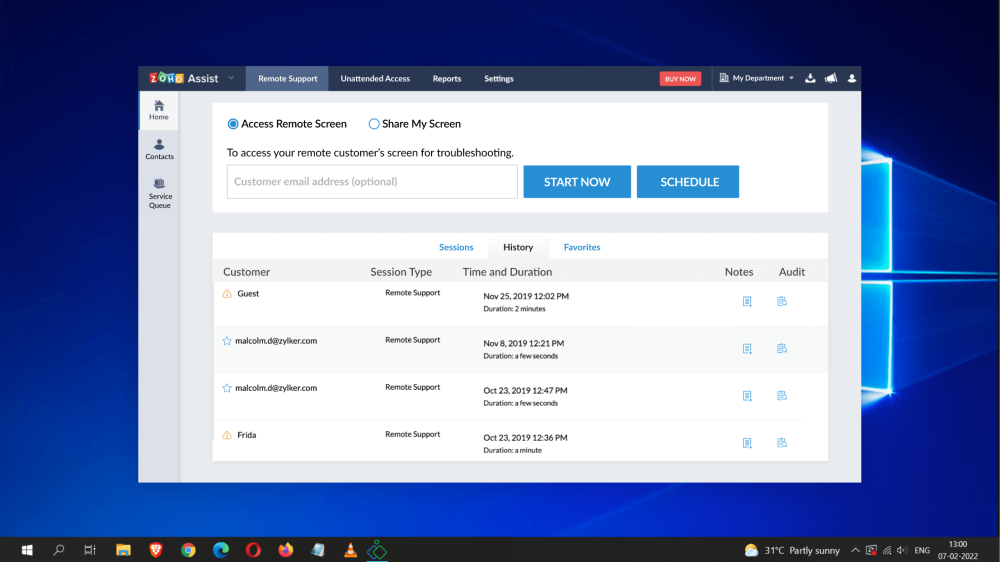Transform Support and Assistance with Zoho Assist's Dynamic Solution
Empower Remote Help and Collaboration with Zoho Assist's Integrated Features.

Popular Questions
General Overview and Features
- What is Zoho Assist and what does it do?
- How does remote assistance work in Zoho Assist?
- Can I use Zoho Assist for both unattended and attended remote support?
- What platforms and devices are supported by Zoho Assist?
- What are the key features of Zoho Assist that differentiate it from other remote support tools?
Accessibility and Integration
- Does Zoho Assist offer browser-based access for remote support sessions?
- Can I integrate Zoho Assist with other third-party tools and applications?
- What is the process to access remote systems behind firewalls or NAT devices?
- Is there a mobile app available for remote support using Zoho Assist?
- How does Zoho Assist handle cross-platform remote access, like connecting to a Windows system from a Mac?
Security and Compliance
- How does Zoho Assist ensure the security of remote sessions and data?
- What encryption protocols are used for data transmission during remote sessions?
- Are there any security measures in place to prevent unauthorized access to remote systems?
- Does Zoho Assist comply with industry standards and regulations regarding data security?
- How does Zoho Assist handle sensitive customer information during remote support sessions?
Pricing and Customization
- What are the different pricing plans offered by Zoho Assist?
- Is there a free trial available, and what are its limitations?
- Can I customize Zoho Assist with my branding and logo for a personalized experience?
- Are there any additional costs for integrating Zoho Assist with other applications?
- What level of technical support is included with each pricing tier, and are there options for additional support packages?
What is Zoho Assist and what does it do?
Zoho Assist is a remote support and access software that allows technicians to remotely control and troubleshoot computers and devices. It enables real-time assistance, system maintenance, and software updates from a distance, improving IT support efficiency.
How does remote assistance work in Zoho Assist?
Remote assistance in Zoho Assist works by allowing technicians to connect to a user’s device over the internet. The user grants permission, and the technician gains remote control to diagnose and resolve issues, provide guidance, and perform tasks as if physically present, enhancing technical support efficiency.
Can I use Zoho Assist for both unattended and attended remote support?
Yes, Zoho Assist supports both unattended and attended remote support. You can connect to computers and devices either with the user’s presence and permission (attended) or without it (unattended) for tasks like updates and maintenance.
Zoho Assist - FREE Trial
What platforms and devices are supported by Zoho Assist?
Zoho Assist supports various platforms, including Windows, macOS, Linux, iOS, and Android, allowing remote support on computers and mobile devices across different operating systems.
What are the key features of Zoho Assist that differentiate it from other remote support tools?
Zoho Assist stands out with features like unattended and attended support, cross-platform compatibility, browser-based access, multi-monitor support, and mobile apps. These differentiators enhance efficiency, accessibility, and versatility in remote support.
Does Zoho Assist offer browser-based access for remote support sessions?
Yes, Zoho Assist provides browser-based access for remote support sessions. Technicians can initiate and conduct support sessions directly from a web browser, eliminating the need for clients to install additional software and facilitating quick and easy remote assistance.
Elevate Your Data Management with Zoho Dataprep Benefits!
Can I integrate Zoho Assist with other third-party tools and applications?
Yes, Zoho Assist offers integration capabilities with third-party tools and applications. You can connect and enhance your workflows by using Zoho Assist’s APIs and plugins to create custom integrations that streamline support processes and improve efficiency.
What is the process to access remote systems behind firewalls or NAT devices?
To access remote systems behind firewalls or NAT devices, Zoho Assist provides solutions like port forwarding, reverse connections, and proxy servers. These methods help establish secure connections, allowing technicians to remotely assist systems even when they’re protected by network barriers.
Zoho Assist - FREE Trial
Is there a mobile app available for remote support using Zoho Assist?
Yes, Zoho Assist offers mobile apps for both iOS and Android devices. These apps enable technicians to provide remote support using smartphones or tablets, enhancing flexibility and accessibility in assisting clients remotely.
How does Zoho Assist handle cross-platform remote access, like connecting to a Windows system from a Mac?
Zoho Assist handles cross-platform remote access by allowing technicians to connect from one operating system to another. For example, a technician using a Mac can connect to a Windows system.
How does Zoho Assist ensure the security of remote sessions and data?
Zoho Assist ensures security through encryption, secure authentication, access controls, session privacy, and compliance with industry standards. It encrypts data transmission, verifies user identities, grants controlled access, keeps sessions private, and follows protocols to safeguard remote sessions and sensitive information.
Elevate Your Data Management with Zoho Dataprep Benefits!
What encryption protocols are used for data transmission during remote sessions?
Data transmission during remote sessions typically employs encryption protocols like TLS (Transport Layer Security) or SSL (Secure Sockets Layer) to ensure secure communication and protect sensitive information.
Are there any security measures in place to prevent unauthorized access to remote systems?
Yes, Zoho Assist implements security measures like secure authentication, unique session codes, explicit client permission, encrypted connections, access control, and session logging.
Does Zoho Assist comply with industry standards and regulations regarding data security?
Yes, Zoho Assist aims to comply with industry standards and regulations such as GDPR, HIPAA, and ISO 27001. It typically follows data protection guidelines, security audits, and privacy policies to ensure that customer data is handled securely and in accordance with established data security standards and regulations.
Zoho Assist - FREE Trial
How does Zoho Assist handle sensitive customer information during remote support sessions?
Zoho Assist handles sensitive customer information during remote support sessions by using encryption, limited visibility, client control, session recording options, data handling policies, and restricted access.
What are the different pricing plans offered by Zoho Assist?
Zoho Assist offers various pricing plans, including a free plan with limited features, as well as paid plans such as Standard, Professional, and Enterprise. Each plan typically offers different levels of features, capabilities, and support options. Customized pricing might be available for larger organizations or specific needs.
Is there a free trial available, and what are its limitations?
Zoho Assist offers a free trial allowing users to explore features for a limited time, often 14 days. Access to some paid features may be restricted during the trial, with session and feature limitations.
Elevate Your Data Management with Zoho Dataprep Benefits!
Can I customize Zoho Assist with my branding and logo for a personalized experience?
Yes, you can personalize Zoho Assist with your branding and logo, maintaining a consistent image and professional appearance during remote support sessions.
Are there any additional costs for integrating Zoho Assist with other applications?
Yes, integrating Zoho Assist with other applications might have additional costs depending on the complexity and specific integration.
What level of technical support is included with each pricing tier, and are there options for additional support packages?
Zoho Assist’s pricing tiers offer varying levels of technical support. Paid plans provide better support, and additional packages might be available for extended assistance. Visit Zoho Assist’s official resources for precise details on support offerings.


